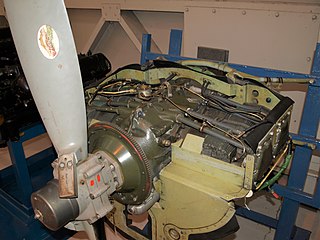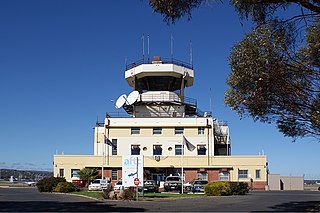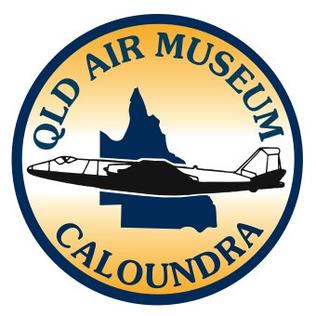
The Royal Australian Air Force (RAAF) is the principal air and space force of Australia, a part of the Australian Defence Force (ADF) along with the Royal Australian Navy and the Australian Army. Constitutionally the Governor-General of Australia is the de jure Commander-in-Chief of the Australian Defence Force. The Royal Australian Air Force is commanded by the Chief of Air Force (CAF), who is subordinate to the Chief of the Defence Force (CDF). The CAF is also directly responsible to the Minister for Defence, with the Department of Defence administering the ADF and the Air Force.

Moorabbin Airport is a mostly general aviation airport for light aircraft located in between the southern Melbourne suburbs of Heatherton, Cheltenham, Dingley Village and Mentone. It also receives commercial airline service. The airport grounds are treated as their own suburb, and share the postcode 3194 with the neighboring suburb of Mentone. With a total of 274,082 aircraft movements, Moorabbin Airport was the second busiest airport in Australia for the calendar year 2011.

The Pacific Aerospace Corporation CT/4 Airtrainer series is an all-metal-construction, single-engine, two-place with side-by-side seating, fully aerobatic, piston-engined, basic training aircraft manufactured in Hamilton, New Zealand.

The Lycoming O-360 is a family of four-cylinder, direct-drive, horizontally opposed, air-cooled, piston aircraft engines. Engines in the O-360 series produce between 145 and 225 horsepower, with the basic O-360 producing 180 horsepower.

RAAF Williams is a Royal Australian Air Force (RAAF) military air base set across two locations, at Point Cook and Laverton, located approximately 20 km (12 mi) south-west of the Melbourne central business district in Victoria, Australia. Both establishments previously existed as separate RAAF Bases until 1989 when they were amalgamated to form RAAF Williams. The name was chosen in honour of Air Marshal Sir Richard Williams, the 'father' of the RAAF.

The Victa Airtourer is an all-metal light low-wing monoplane touring aircraft that was developed in Australia, and was manufactured in both Australia and New Zealand.

Parafield Airport is on the edge of the residential suburb of Parafield, South Australia, 18 km (11 mi) north of the Adelaide city centre and adjacent to the Mawson Lakes campus of the University of South Australia. It is Adelaide's second airport and the third busiest airport in Australia by aircraft movements. Although owned by the Government of Australia, the airport is leased to and managed independently by Parafield Airport Ltd., a wholly owned subsidiary of Adelaide Airport Limited.

The National Test Pilot School (NTPS) is the only civilian test-pilot school in the United States, located in Mojave, California. It is organized as a not-for-profit educational institute under California state law and is governed by a board of trustees. NTPS is one of the seven test-pilot schools worldwide recognized by the international Society of Experimental Test Pilots, giving pilot graduates of NTPS instant initial acceptance into their society. In 2016, NTPS became the first test-pilot school in the world to be certified as a Flight Test Authorised Training Organisation by the European Aviation Safety Organization.

Australian Army Aviation (AAAvn) is a corps of the Australian Army. It was formed on 1 July 1968. The motto of the Australian Army Aviation corps is Vigilance.
The Royal Victorian Aero Club is an Australian aero club based at Moorabbin Airport in Melbourne.
The Oswald Watt Gold Medal is an Australian aviation award named for Oswald Watt (1878–1921), a decorated pilot in World War I.
Scone Memorial Airport, is a public airport in the Upper Hunter Valley, 4 km (2.5 mi) northwest of Scone, New South Wales, Australia. It was built to provide a public aerodrome replacing Nandowra aerodrome on located on "Nandowra", approx. 9 km south of Scone.

Eric Harrison was an Australian aviator who made the country's first military flight, and helped lay the foundations of the Royal Australian Air Force (RAAF).

No. 4 Elementary Flying Training School was a Royal Australian Air Force (RAAF) pilot training unit that operated during World War II. It was one of twelve elementary flying training schools employed by the RAAF to provide introductory flight instruction to new pilots as part of Australia's contribution to the Empire Air Training Scheme. No. 4 EFTS was established in January 1940 at Mascot, New South Wales, and initially operated in conjunction with civilian flying organisations based at Mascot and Newcastle. The school was disbanded in April 1942, and its operations transferred to No. 6 Elementary Flying School at Tamworth.

No. 1 Flying Training School is a school of the Royal Australian Air Force (RAAF). It is one of the Air Force's original units, dating back to the service's formation in 1921, when it was established at RAAF Point Cook, Victoria. By the early 1930s, the school comprised training, fighter, and seaplane components. It was re-formed several times in the ensuing years, initially as No. 1 Service Flying Training School in 1940, under the wartime Empire Air Training Scheme. After graduating nearly 3,000 pilots, No. 1 SFTS was disbanded in late 1944, when there was no further requirement to train Australian aircrew for service in Europe.

The Queensland Air Museum is a not-for-profit community-owned aviation museum located at Caloundra Airport in Queensland, Australia. Its mission is to collect and preserve all aspects of aviation heritage with an emphasis on Australia and Queensland. The museum has the largest collection of historical aircraft in Queensland and it also has a large collection of aircraft engines, equipment, artefacts, photographs and books.

Fighter Squadron was a flying unit of the Royal Australian Air Force (RAAF) in the early 1930s. It operated Bristol Bulldog single-seat fighters. Along with Seaplane Squadron, Fighter Squadron was a component of No. 1 Flying Training School, based at RAAF Point Cook, Victoria. As well as participating in training exercises, Fighter Squadron was frequently employed for aerobatic displays and flag-waving duties.
Douglas Walter Leckie, was an officer in the Royal Australian Air Force who served as Commanding Officer Antarctic Flight RAAF, which assisted the Australian National Antarctic Research Expedition (ANARE) in 1954, 1956 and 1959.

Group Captain Herbert Clarence Plenty, DFC and Bar, was an officer in the Royal Australian Air Force (RAAF).
















